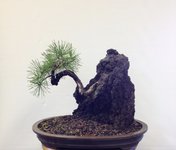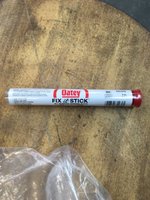kjo/a
Seed
- Messages
- 4
- Reaction score
- 4
My root over rock spruce is entering its second season of rock hugging now.
I was absent mindedly looking at the new growth extending today when it suddenly occurred to me that I never planned how I was going to go about securing this tall heavy rock into a pot some day, and there are no lumps and bumps I can use to pin it down.
There's very little I can find online about the act of securing rocks to pots... How do you do yours?
I was absent mindedly looking at the new growth extending today when it suddenly occurred to me that I never planned how I was going to go about securing this tall heavy rock into a pot some day, and there are no lumps and bumps I can use to pin it down.
There's very little I can find online about the act of securing rocks to pots... How do you do yours?



